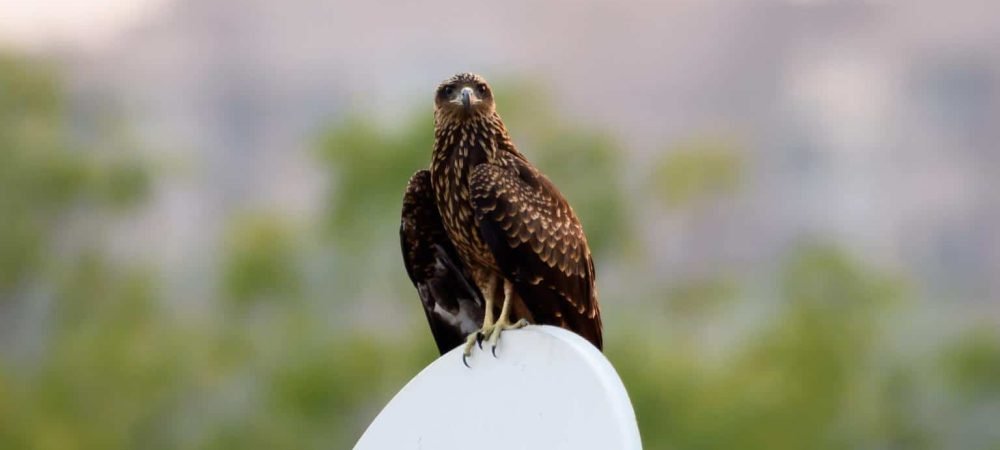
Want to learn more? This book on the Birds of Prey of North America is a fantastic read!
New Mexico probably evokes images of arid deserts, of cacti and tumbleweeds rolling across a dusty plain.
Its habitat is a lot more diverse than people might think however.
The northern reaches of the state are filled with mountain forests, exactly the type of place an alpha predator bird-of-prey might stake its claim.
New Mexico’s sunny climate also makes it an ideal landing spot for hawks coming from the northern U.S. during winter, which makes it a good spot to catch these majestic raptors at rest.
To help you find them, we’ve provided the most frequently encountered hawks in the state of New Mexico:
Want to attract birds of prey to your yard? Take a look at our article!
What Hawks can be seen in New Mexico?
Table of Contents
1. Sharp-Shinned Hawk
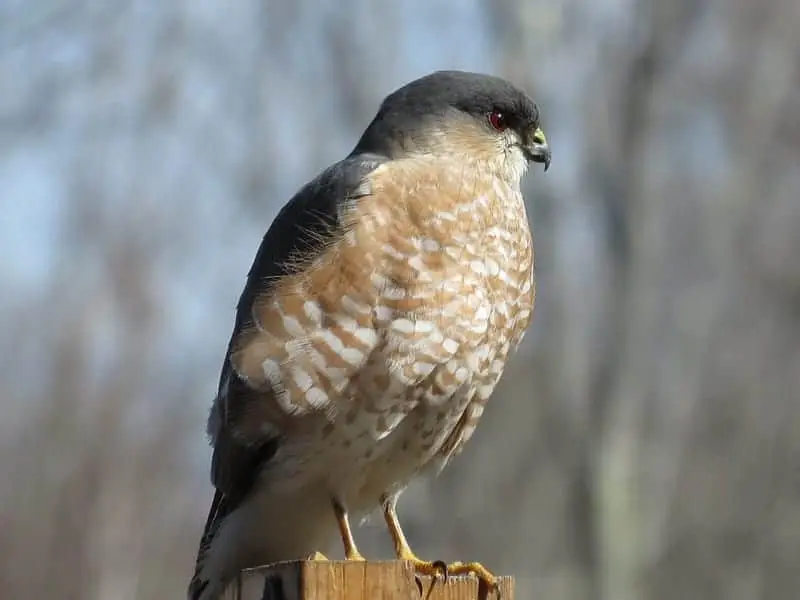
“Sharp-Shinned Hawk” by ‘Dennis Murhpy‘ is licensed under CC BY 2.0
Frank Lambert, XC274807. Accessible at www.xeno-canto.org/274807.
Wingspan
43-56cm
Weight
87-218g
Life Expectancy
3 years
Diet
Robins and Thrushes
Sharp-Shinned Hawks are a small species of hawk, and the males are classified as the smallest hawks in The United States.
This is because the females are actually around one-third larger than the male hawks.
Sharp-Shinned Hawks are known for their long legs and toes, short, round wings, and extremely long tails.
The adult hawks of this species often have pale, gray-colored feathers but they have orange, rust-colored underbellies.
Unlike adults, juvenile Sharp-Shinned Hawks are usually brown with pale white underbellies. Louisiana sees a vast population of Sharp-Shinned Hawks due to their yearly migration from Canada.
This is the optimum time to spot these hawks as they travel both in flocks and individually.
Sharp-Shinned Hawks prefer to take habitat in woodlands and forests, nesting in coniferous trees. You’ll recognize these hawks by their distinct ‘ki-ki’ call and their high pitched scream.
2. Cooper’s Hawk
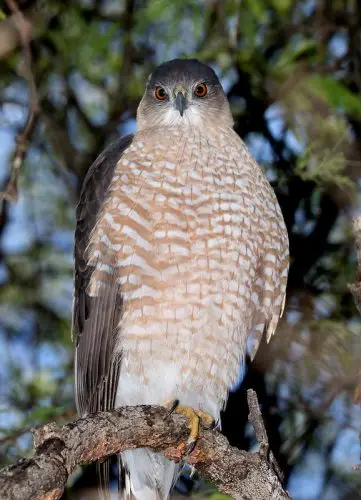
Sue Riffe, XC611811. Accessible at www.xeno-canto.org/611811.
Wingspan
62-90cm
Weight
330-680g
Life Expectancy
Up to 12 years
Diet
Small Birds, Mice & Squirrels
This is another of New Mexico’s roadside raptors who migrate from the north rather than take up residence.
Sharp-shinned hawks come from places like Canada and Montana to vacation in the state during winter, so they might become scarce when the weather warms and they head back north.
As mentioned, it is very similar in appearance to the Cooper’s, though much smaller. In fact, averaging around 13 inches in length and 8 ounces in weight, the sharp-shinned hawk is the smallest of all the North American hawks.
Like many birds-of-prey, hese raptors hunt from the edges of forests overlooking flatlands where critters scatter, usually near watery ground like deltas and riparian areas where food is most diverse.
3. Northern Goshawk
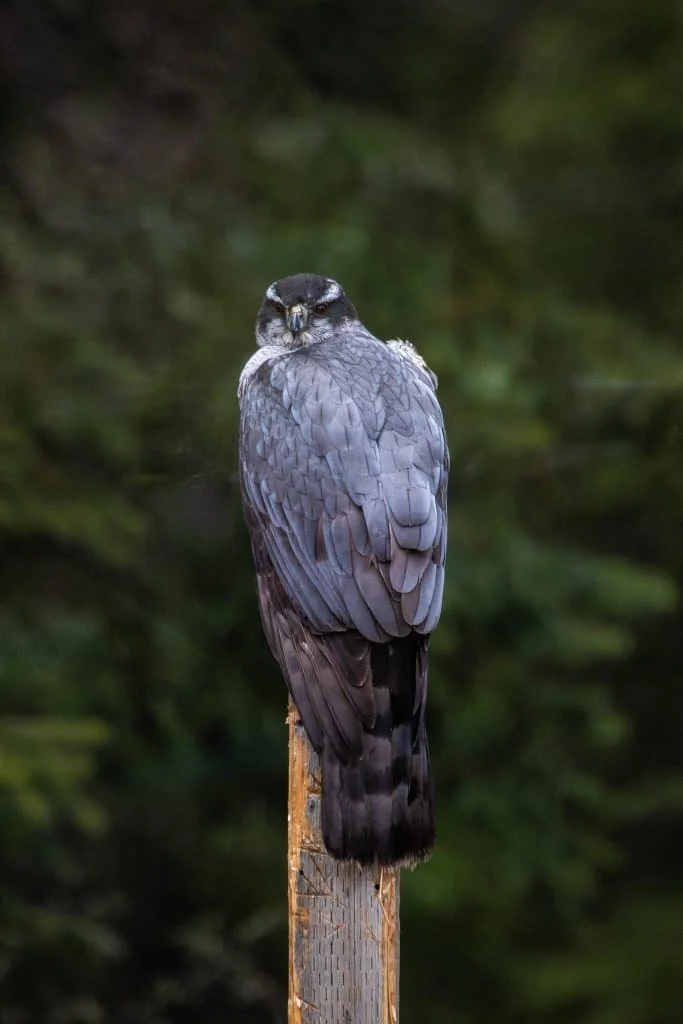
Peter Stronach, XC623479. Accessible at www.xeno-canto.org/623479.
Wingspan
89-127cm
Weight
631-1364g
Life Expectancy
7 Years
Diet
Mammals, reptiles & insects
This raptor resides in New Mexico all year, but they also receive a number of temporary visitors who come south for the winter.
It is one of the largest of all hawks, comparable in size to the red-tail, and it is an aggressive defender of its nest.
Goshawks nest among tall fir trees, in national forests like Lincoln and Santa Fe, moving to lowlands when the weather demands.
These are one of the more recognizable hawks physically, with white chests and faces speckled with darker colors, and backsides that are usually dark brown or gray.
The goshawks profile when perched or at flight might resemble a songbird if not for its considerable size.
4. Red-Tailed Hawk
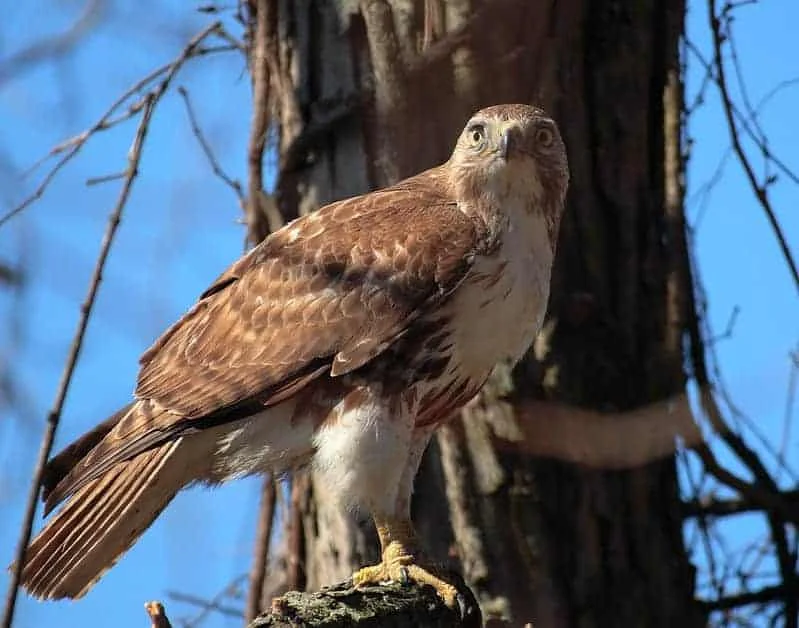
Peter Ward and Ken Hall, XC603736. Accessible at www.xeno-canto.org/603736.
Wingspan
114-133cm
Weight
900-1460g
Life Expectancy
10-15 years
Diet
Small mammals, mice & voles
The most abundant hawk species in America, the red-tailed hawk can be seen all year in New Mexico, like most states.
They are the most intrepid of all the hawks, venturing into civilization much more often to hunt from atop road signs and light poles, making them the typical “roadside raptor”.
These birds are comfortable in dry climates, mountains, and green forests, though they prefer the latter.
They are distinct physically for two main reasons: the gathering of reddish feathers on their tails–which may actually range between a color close to orange and others closer to brown–and for their size, as they are among the largest North American raptors.
5. Northern Harrier
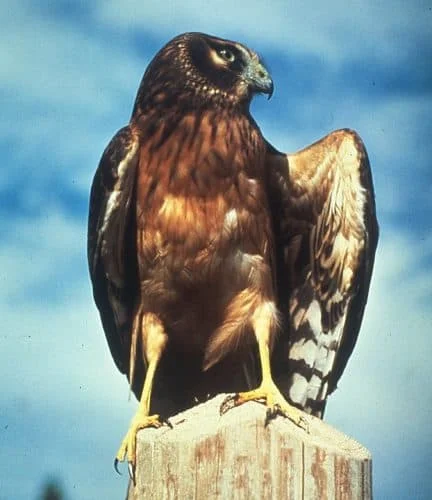
Bruce Lagerquist, XC329772. Accessible at www.xeno-canto.org/329772.
Wingspan
120cm
Weight
390g
Life Expectancy
16 years
Diet
Rodents and small birds
The northern harrier is one of the hawks who come south from cold regions like Canada and Alaska during winter.
Many will camp for a time and move on to Central and South America; if it’s warm enough, though, many will vacation in states along the southern US border, like New Mexico.
The harrier is an adaptable hunter, more likely to strike at prey from the ground than in the trees.
Northern harriers can be spotted by their distinctive owl-like features–a stout body, a round head, and a ring of off-colored feathers around the face.
Their coloring is light on the underside with checkered patterns that morph into darker browns and/or greys on their backsides. Fortunately, this hawk is quite visible as it “harries” its prey from the sky.
6. Zone-Tailed Hawk
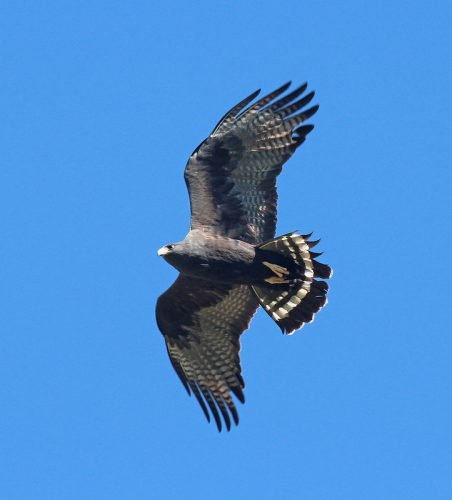
Richard E. Webster, XC604827. Accessible at www.xeno-canto.org/604827.
Wingspan
120cm
Weight
600-900g
Life Expectancy
4 years
Diet
Other birds, sometimes lizards
The “zone” in this hawk’s namesake refers to its prominent stripes on its rear feathers that divides its colors into distinct zones.
It is less popular than the aforementioned, likely because it’s more rare, but receives mention on this list because of its increased breeding population in the southeastern US.
This change is perhaps most notable in New Mexico among the border states, where many zone-tails have come to reside.
Beyond the trademark tail, this hawk generally has bolder contrast between the light and dark feathers of its front and rear compared to most hawks.
Rather than a light stomach that blends into a darker backside like most, the zone-tailed hawk might be all black or grey except the tip of its wings.
As they travel north seeking unclaimed hunting space in the spring and summer, look for these hawks near the Mexican border.
7. Harris's Hawk
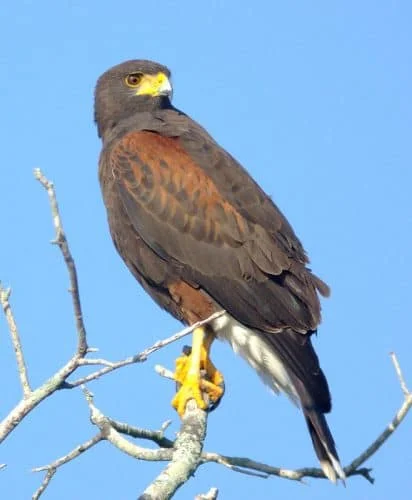
Ignacio Escobar, XC585065. Accessible at www.xeno-canto.org/585065.
Wingspan
110cm
Weight
700g
Life Expectancy
15 years
Diet
Small mammals, birds & rodents
These are the rare hawks of the desert, who naturally feel right at home in arid places like the Pecos Valley in southeast New Mexico.
They are also the rare pack hunters among the usually isolated species, where the chances of spotting one near nature preserves in this area is increased.
Look for their distinctive dark brown, rust, grey or blue-gray coloring, which covers both their front and back sides (unlike most hawks who have two-tone coloring).
Harris’s hawks also have a more prominent beak compared to their kin, from a distance appearing a sleeker version of fellow desert birds like vultures.
8. Common Black Hawk
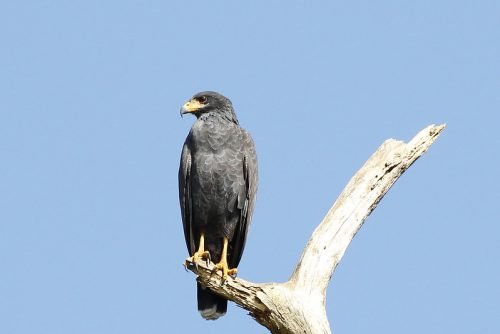
Richard E. Webster, XC579265. Accessible at www.xeno-canto.org/579265.
Wingspan
127cm
Weight
950g
Life Expectancy
13 Life Expectancy
Diet
Snakes, frogs and Fish
Like the zone-tail, the common black hawk comes north when it’s warm to breed.
They are by nature Central and South American birds, but their reach has spread as far north from that region as Utah, meaning many come to settle in states closer to home like New Mexico.
As you may expect, the black hawk stands out from its multicolored kin because its feathers are almost completely black, save for small strips on its wings and tail.
You can see more light feathers under its wing when it flies, but at rest the bird appears to live up to its name.
Black hawks populate places in New Mexico like the Gila River, where food sources and treetop hunting perches are abundant, and you can expect them to stay near the Mexican border like the zone-tailed hawk.
9. Swainson's Hawk
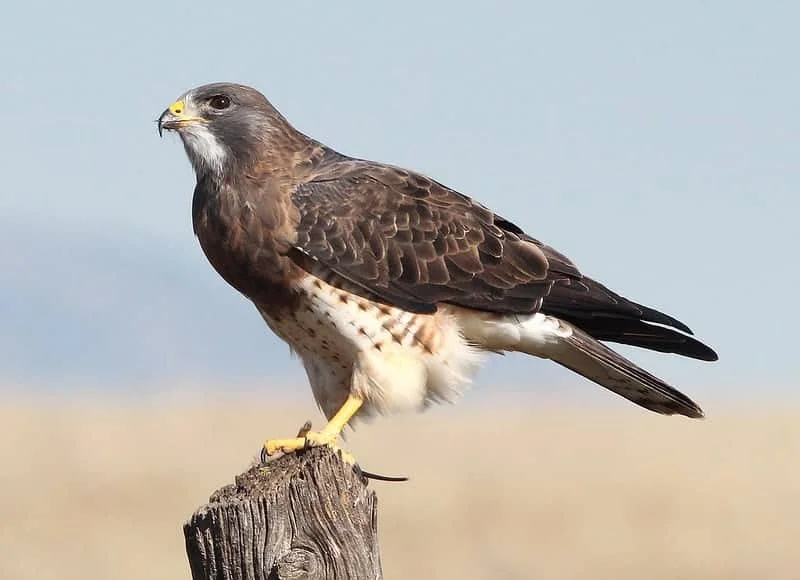
These raptors are most popular near New Mexico State University (NMSU), where a flock of Swainson’s hawks famously descended on campus in 2016.
Their presence at the school indicates how comfortable Swainson’s hawks feel around people in New Mexico, which is why they can be spotted everywhere in the state for much of the year.
Fortunately for college students, but unfortunately for bird watchers, this hawk flies to Central and South America every winter, though their migration does present more opportunities to spot one in fall.
Look for the hooked beak of its eagle-like profile, with a round heat atop a stout body.
Their plumage varies widely for easy identification, from white speckled with darker browns and blue-grays on the back to mostly dark brown or dark grey with off-white blending at sporadic parts.
Conclusion
Apparently, New Mexico’s arid environment is overstated, and there are plenty of green forests and mountains for a solitary bird-of-prey to settle down.
Many of the hawks in New Mexico are migratory, however, either coming down for the winter from the far north or coming north from Central and South America in the summer, presumably to breed and hunt away from the competition.
Still, as migration is one of the rare times when this individualist bird will group together, New Mexico is a good place to catch a few hawks together as they move.

More Articles.
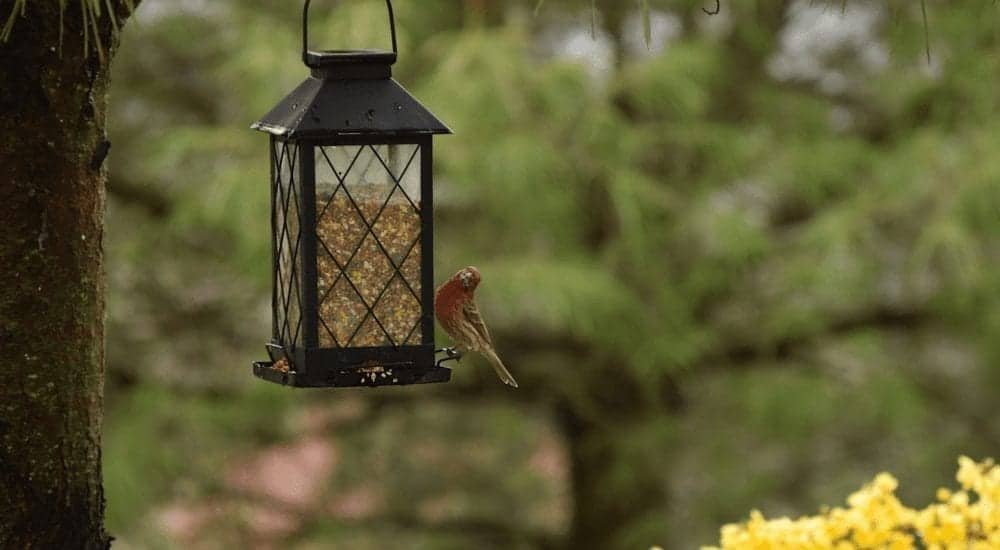
Bird feeders are a key part of any yard that wants to attract birds. They
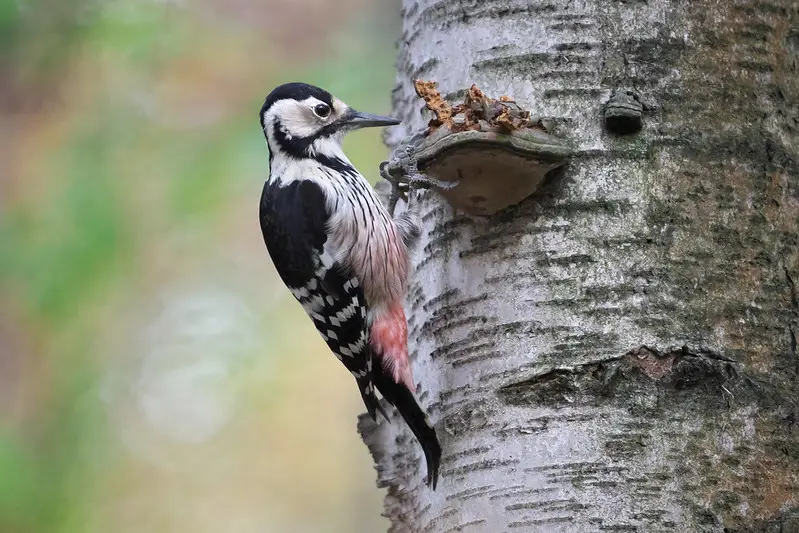
What Woodpeckers can you see in Germany? (8 Species with Pictures & Sounds)
What woodpeckers can you see in Germany? There are 8 different species of woodpecker that
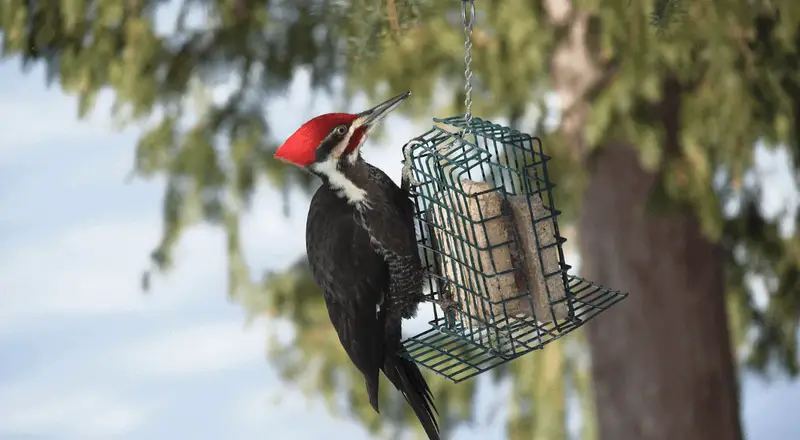
How to attract Woodpeckers to your yard?
Woodpeckers are often elusive to the sight but distinct to the ears. Their famous pecking

About Us
We are avid bird-watchers who recently retired, allowing us more time to travel the world. Fortunately, we have managed to visit numerous countries around Europe, Asia, and America. Watching and photographing birds has been a passion for many years and we are making the most of the extra time on our hands!
